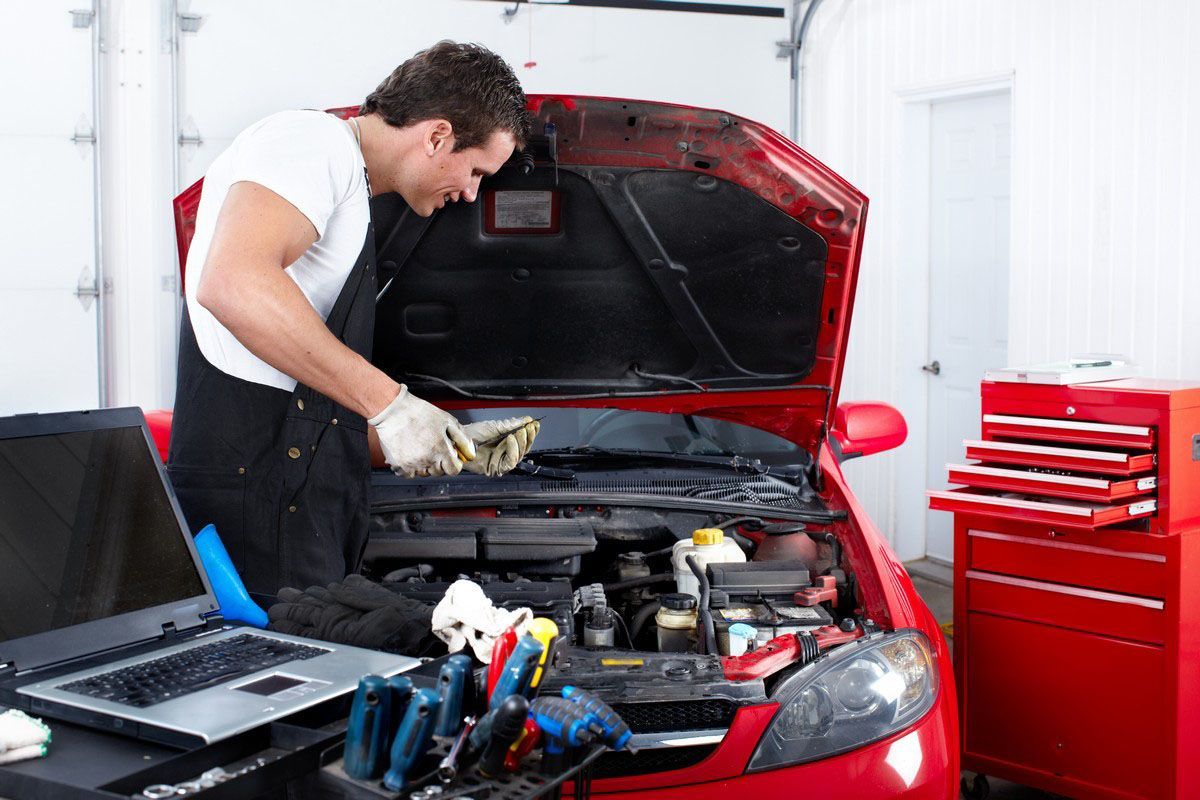October 17, 2025
Understanding the mechanics and importance of a car's suspension system is crucial for maintaining vehicle safety and performance. This article explores why suspension repair is vital and how it influences various aspects of your vehicle's operation. A well-maintained suspension system does more than just support your car; it absorbs shocks, supports vehicle weight, and facilitates smooth handling.
The suspension system is a critical component of the vehicle's framework that contributes greatly to ride quality and vehicle safety. Without it, every imperfection on the road would translate into a jarring ride. In recent years, as the average age of cars on American roads has climbed to 13.6 years, understanding the health of this system has become more important than ever.
Now more than ever, vehicle owners—including those driving older vehicles—need to be vigilant in their car maintenance routines. Regular inspection and timely repair of the suspension can prevent a range of issues, such as reduced braking efficiency and uneven tire wear. Let's explore the suspension system in greater detail to understand why these steps are necessary.
Understanding the Suspension System
The Basic Components of a Suspension System
The core components of a car's suspension system include springs, shock absorbers, struts, linkages, and various bars and joints. Springs work in tandem with shock absorbers to absorb road imperfections, while struts provide structural support and assistance in alignment settings. These parts collaborate to ensure the driver can maintain control and comfort even on the most imperfect roads.
Each component has its unique role, but cannot function effectively in isolation. The interconnectedness of these parts makes it crucial that all of them are routinely checked for wear and tear. For example, a damaged strut not only compromises the suspension but can also strain other components, leading to a domino effect of failures.
In addition to these fundamental parts, most modern cars are equipped with advanced features like electronic controls for optimized performance. These added components bring new layers of complexity to the system. According to the Wall Street Journal, the average age of cars on American roads has climbed to 13.6 years, significantly higher than the 8.4-year average from three decades ago. Hence, understanding the makeup of your vehicle's suspension system is the first step toward effective maintenance and repair.
How the Suspension System Works
The car’s suspension system operates through a series of mechanical interactions that all aim to minimize road disturbance for the car’s occupants. When your car encounters a bump, the springs compress and the shock absorbers dissipate the kinetic energy, reducing the impact felt inside the cabin. This functionality not only ensures driver and passenger comfort but also keeps the car's tires in contact with the road, enhancing stability and traction.
Mechanically, the suspension allows each wheel to move independently, ensuring that bumps on one side of the car don't cause imbalance to the entire vehicle. This independent movement is vital for maintaining control, especially at high speeds or on uneven terrains. Moreover, a properly functioning suspension absorbs not just vertical vibration but also horizontal and lateral forces.
Because these components are often located underneath the vehicle, detecting issues can be difficult without professional assessment. Simple, routine check-ups can catch problems early and prevent costly repairs. Understanding how the suspension system functions paves the way to recognizing early signs of potential failure, thus promoting a proactive maintenance culture.
The Role of Suspension in Vehicle Stability
Vehicle stability is paramount for both safety and drive quality, and it is significantly influenced by the suspension system. A well-maintained suspension ensures that the weight of the vehicle is evenly balanced across all wheels, thus maximizing traction. With consistent road contact, stability is less likely to be compromised during sudden maneuvers or emergency stops.
The suspension's role in distributing the car's weight dynamically supports turning and handling, which is a critical factor when navigating sharp bends or during high-speed driving. It effectively manages the vehicle’s center of mass, reducing body roll and preventing potential rollover. Such stability is especially important for vehicles like SUVs and trucks that have a higher center of gravity.
For performance-oriented vehicles, the suspension has to be even more specialized to accommodate their higher speeds and demanding maneuvers. In essence, regardless of the vehicle type, the suspension system is crucial for maintaining balance, controlling roll, and achieving greater adhesion to the road. Paying attention to its health is not just about comfort; it's a safety imperative.
Different Types of Suspension Systems
There are several different types of suspension systems, each with its own strengths and weaknesses. Some of the most common include independent suspension systems, dependent suspension systems, and semi-independent systems. Independent suspensions, like MacPherson struts, allow each wheel to respond individually to road conditions, offering superior ride comfort and handling.
On the other hand, dependent suspension systems connect the tires directly with an axle, which makes them robust and better suited for carrying heavier loads, as in trucks or utility vehicles. Semi-independent systems, such as torsion beams, offer a compromise between cost-effectiveness and performance. Each type of system is designed to suit specific performance needs and vehicle requirements.
Understanding the strengths and weaknesses of your vehicle's suspension can guide maintenance choices. For example, cars with independent suspensions may require more frequent adjustments to maintain optimal performance. Knowledge of the kind of system your car uses is invaluable for making informed decisions about replacement parts and repair procedures.
Common Issues with Suspension Systems
Like any mechanical system, suspension systems face wear and tear, leading to several common issues. One frequently encountered problem is the wearing out of shock absorbers or struts, which can lead to poor shock absorption and increased body roll. Similarly, springs can weaken over time, leading to a sagging suspension that impacts ride height and vehicle handling.
Another common problem includes alignment issues, usually indicated by a car pulling to one side. This can happen due to worn-out suspension components or improper alignment settings, requiring immediate attention to prevent tire wear. Noise, such as creaks or rattles while driving, may indicate loose or damaged parts that need examination.
Identifying these issues early on can prevent more significant damage down the line. Regularly scheduled maintenance checks can detect these problems before they escalate into costly repairs. Given the complexities of modern suspension systems, it's wise for car owners to work with a qualified mechanic who can accurately diagnose and address these issues.
The Effects of a Faulty Suspension System
Impact on Vehicle Handling and Control
A faulty suspension system can seriously hinder vehicle handling and control, which are essential for a safe driving experience. Poor suspension can increase the vehicle's tendency to sway or lean during turns, making it more challenging to maintain lane stability. Moreover, it compromises the driver's ability to maintain direct control over the vehicle, complicating emergency maneuvers.
Particularly at higher speeds, the diminished shock absorption can cause the vehicle to bounce, risking the loss of traction and control. This can lead to significant safety concerns, especially in situations requiring sudden stops or swift course corrections. In essence, the handling quality of your vehicle heavily depends on the efficacy of the suspension system.
Effective control also comes into play during adverse weather conditions. Roads can get slippery due to rain, snow, or ice, requiring optimal handling capabilities from the vehicle. However, a compromised suspension may fail to provide the necessary responsiveness, adding an element of risk to everyday driving. Thus, timely repair and maintenance of the suspension are critical to ensuring road safety. Be sure to reach out to Precision Auto Center today for more information on our professional suspension repair!


